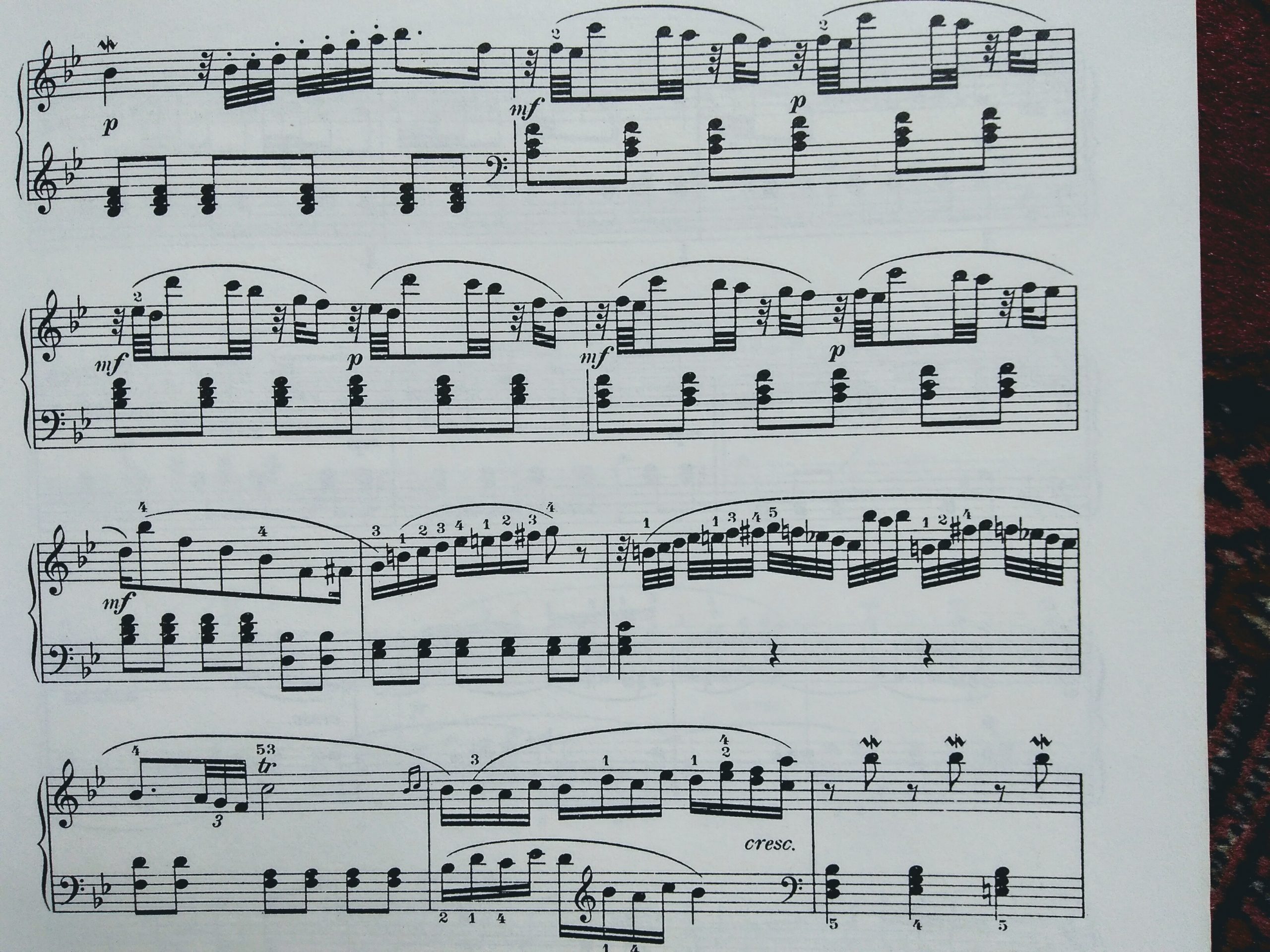 I do have some volumes of Haydn piano sonatas, but I confess I didn’t realise until quite recently that they didn’t contain all his sonatas. In a charity book sale, I came across a slim volume of selected Haydn sonatas which contained a couple of early works I don’t think I’d ever seen or heard. Out of curiosity, I bought it.
I do have some volumes of Haydn piano sonatas, but I confess I didn’t realise until quite recently that they didn’t contain all his sonatas. In a charity book sale, I came across a slim volume of selected Haydn sonatas which contained a couple of early works I don’t think I’d ever seen or heard. Out of curiosity, I bought it.
One of the works new to me was an early sonata in B flat, catalogued as Hoboken XVI:2. It probably dates from Haydn’s younger years, before he got that all-important appointment to the court of Esterhazy.
All through his life, Haydn seems to have been acquainted with a succession of female keyboard players, for whom he wrote new pieces. These female musicians were prevented by social convention from playing in public, but some of them were excellent players and had opportunities within the home, or the ‘salon’, to perform to a small but discerning audience. At the time of the B flat sonata, these young ladies may have been Haydn’s pupils. It seems that he gave away new keyboard pieces without even trying to get them printed, and this sonata might be one of them.
To be honest, the outer movements – while modestly charming – don’t really hint at the inventive genius that Haydn displayed so magnificently in later works. But the slow movement was a lovely surprise. It’s a Largo in G minor, three crotchets to the bar. Those bars are generally divided into three pairs of ‘walking’ quavers, over which a melodic line undulates with an effect akin to gentle sobbing.
After eight bars, the mood suddenly changes. Still with the walking quavers in the bass, the right hand becomes skittish. And a few bars later (see photo), it breaks out into what I suppose is the 18th century equivalent of a little jazz riff. For three bars, it skitters between the quaver beats in a rhythm so complicated that I had to stare at it and do some mental arithmetic before I saw how it worked.
Once I’d got the hang of the playful rhythm, I realised how clever the phrasing is. Plodding quavers continue in the left hand but now, instead of each bar consisting of three pairs of quavers, the shape of the little riffs in the right hand divides the bar in half – into two groups of three quavers. This has the effect of making it seem as if the speed of events has suddenly doubled. The bars seem to go by twice as fast. It’s all over in a flash, but leaves behind a slightly heady feeling, as though we had just had a gulp of champagne.
In later years, Haydn gave free rein to the ‘jazzy’ side of his personality, especially in his string quartets. His late piano sonatas are full of jeux d’esprit, passages of wayward humour which some find endearing, while others find them perplexing. I like to think of them as moments when he allowed himself to go off the rails in a way which would make his friends smile.




Haydn is so inventive. There are string quartet movements which – if you’ve switched on in the middle – could be mistaken for music of two centuries later. And his sense of humour bubbles over on many occasions! So nothing surprises me about his experimental forays!